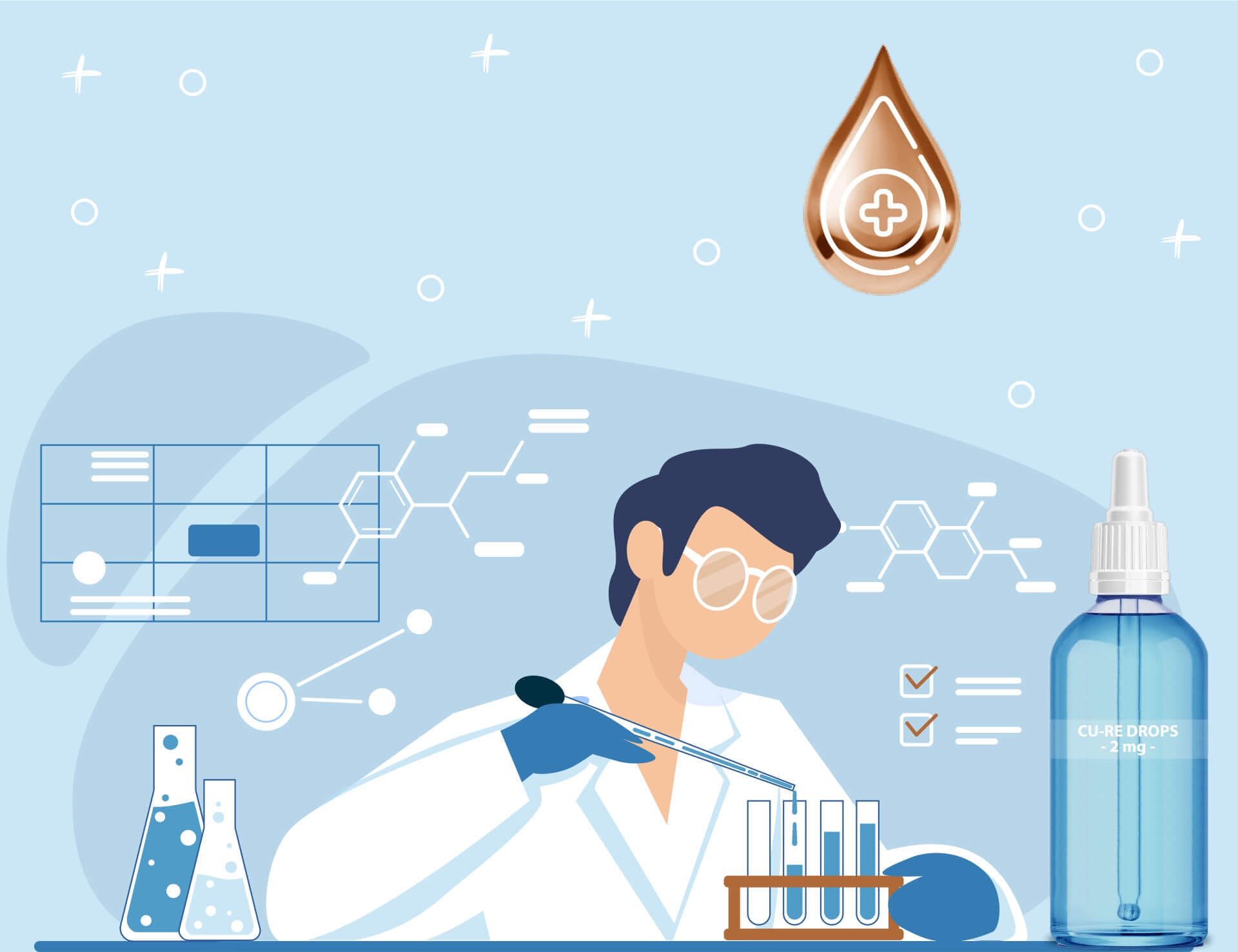Copper is an essential trace element, meaning we are not capable of synthesizing it and therefore depend on external intake. The term ‘trace element’ refers to those elements of which less than 100mg per day is sufficient for physiological function.
The unique chemistry of copper
In Mendeleev’s periodic table, copper appears with an atomic number of 29 and an atomic mass of 63.546, located in the transition metals group.
The 29 electrons of copper are distributed in the following configuration:
1s² 2s² 2p⁶ 3s² 3p⁶ 3d¹⁰ 4s¹
This is a unique phenomenon even among transition metals, as it does not follow the typical electron configuration rules but fills the electron shells differently.
And why is this important to us, ordinary mortals?
Because it is this exceptional electrochemical property that allows copper to exist in various redox states. Within the body, copper can easily gain or lose an electron, allowing it to operate at different levels of oxidation. This characteristic makes it indispensable in energy balance and physiological processes.
The two most common oxidation states of copper are:
- Cu(I) / Cu+ / cuprous ion
- Cu(II) / Cu²+ / cupric ion
Dietary intake
Copper enters the body through diet and the body also manages the existing amount stored primarily in the liver and bone marrow.
Recommended dietary allowances are typically standardized based on age groups and body weight. Listing these in detail is completely unnecessary because functional mineral supplementation relies not on the necessary minimum intakes but on optimal levels. Moreover, individual health challenges often require even more personalized intake approaches.
Dietary sources of copper commonly include liver, seafood, and nuts. The copper content in these foods has become questionably reduced over time, or due to the presence of other elements (iron, zinc, toxic metals), the absorption and utilization of copper may not be efficient.
The pathway of copper in the body
Copper absorption primarily occurs through the enterocytes of the small intestine. Dietary or supplemental copper at this stage predominantly appears in its oxidized form (Cu(II)), which is largely reduced to Cu(I) by reductase activity enzymes or by vitamin C.
The Cu(I) is then transported across the enterocyte membranes via a high-affinity copper transporter known as CTR1 (copper transporter 1). The remaining Cu(II) is transported into the cell by another transporter, DMT1 (divalent metal transporter 1).
Interestingly, these two transporters complement each other’s function. For example, if there is a lack of reductase activity leading to an abundance of Cu(II), the activity of DMT1 increases while that of CTR1 decreases. The body has solutions for everything when it comes to balancing supply with demand.
Inside the cells (cytosol), copper is delivered to its various destinations by numerous antioxidant chaperone proteins (like glutathione and ATOX1) and eventually reaches the Menkes protein (ATP7A), and then the trans-Golgi network, from where it continues its journey bound to cuproenzymes.
Upon entering the bloodstream from the small intestine, copper travels bound to albumin and transcuprein to the portal circulation and then to the liver. In the hepatocytes, copper reaches its final transport enzyme apo-ceruloplasmin, bound to Wilson proteins (ATP7B), which, binding 6-8 copper ions, begins the copper distribution throughout the body.
Three important processes occur within the liver cells:
- The copper ions travel bound to antioxidant copper chaperone proteins depending on their destination and direction.
- A large percentage of copper not taken up by ceruloplasmin is excreted by the liver cells into the bile.
- A small percentage of the copper not taken up by ceruloplasmin is returned to the circulation, where it continues to travel bound to cuproenzymes.
The utilization of copper
The Western body struggling with copper deficiency adapts to a meager quantitative supply, which can often be detected by low ceruloplasmin levels or symptoms related to copper deficiency. (Laboratory diagnostics are not very informative regarding copper except for the diagnosis of a few rare diseases.)
Upon the administration of a sensitive amount of orthomolecular copper supplementation, enzymatic changes occur, to which the quantity and activity of copper transport proteins adapt. It is important to note that this process may often require 3-4 months.
Any amount perceived as extra is strictly regulated, bound to proteins, and distributed between the path designated for excretion through the biliary route and the redistributive (recirculatory) pathway returning to the circulation.
Thoughts on toxicity
For those still concerned about copper, it is worth considering the indispensable role copper plays in physiological processes.
In detail: Why should we supplement with copper?
To reach what is called primary (quantitative) toxicity, one would have to consume an insane amount, which under realistic conditions is not a common problem.
The phenomenon of secondary toxicity is NOT the fault of copper, but rather can be attributed to the malfunction of a specific protein involved in copper transport. Interestingly, this type of toxicity can also be resolved by restarting the copper balance, that is, through functional copper supplementation.
The expression of copper uptake transporters can be found throughout the body, especially in essential areas such as the heart, nervous system, or the digestive system. Potentially toxic metals do not have such an active receptor network.
The body is capable of fantastic equilibrium mechanisms and has a plan B, C, D, E, etc., in case of crisis. As mentioned earlier, a harmonious concert of numerous transport mechanisms in the circulation or within cells works to ensure that copper reaches the right enzyme in the right organ, or just travels the necessary nanometers within the cells. And by the way, I haven’t listed all of them! 🙂
In summary
-
The role of copper in the body is undeniably and unequivocally essential.
-
The pathway of copper is a strictly regulated process and an intensely studied phenomenon.
-
With appropriate nutritional preparation, copper supplementation is safe and important for most people in the Western world.





